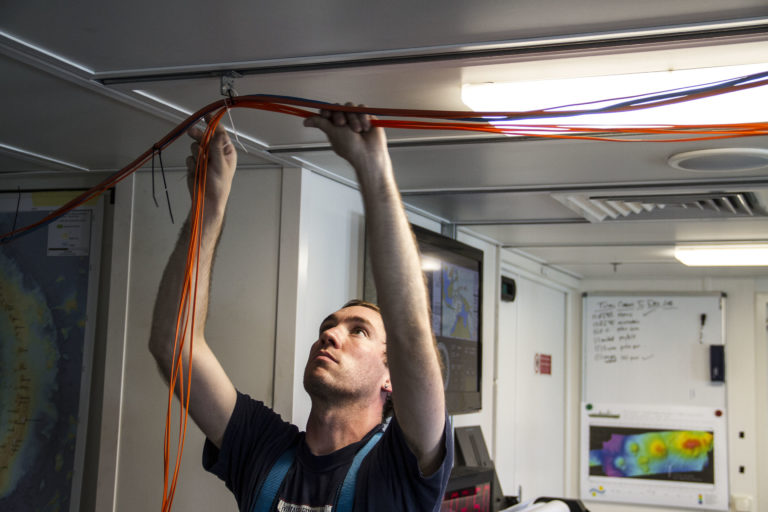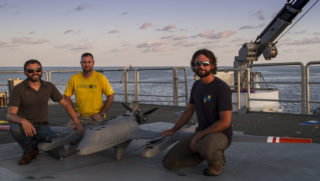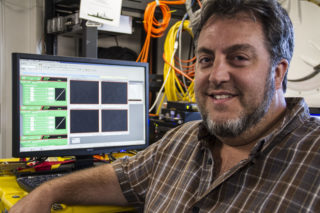The processes controlling carbon dioxide transport and transformation in oceans remain uncertain. We need to be able to model the transfer of this gas between the atmosphere and the ocean in order to create regional and global budgets of carbon, nutrients and pollutants.
Technology is one of the reasons why this knowledge has had to wait. Chris Zappa knew it, which is why he decided to thread oceanography and engineering together. His working group has been at the forefront of developing groundbreaking instruments that are being used today onboard Falkor.

No Breaking, No Mixing
When waves break on the surface of the ocean, they create mixing, which allows gas from the atmosphere to enter the water and water from the ocean to enter the atmosphere. We know a lot about mixing at wind speeds between 6 and 30 knots, but not at lower speeds. When the water is calm, the sea surface microlayer is more prevalent, and since it is an oily film, it is fair to suspect that it suppresses waves and decreases mixing.
This is why the science team on Falkor has sought out these flat water work conditions. However, even the ripples that Falkor creates in the water could impact the measurements gathered by Chris Zappa’s team, so the scientists have turned to technology to help. Chris wants to get his tools far away from the ship to avoid any disruption in the water, and recent developments in drone technology have allowed the team to do this.
Getting The Desert People Wet
When batteries, sensors, and processors became good enough and less expensive, Latitude Engineering knew it finally made sense to combine features from planes and helicopters into Unmanned Autonomous Vehicles (UAVs). Set in the middle of the Arizona desert, the Latitude team was the first one to create a working version of these UAVs and this during this cruise, the aircraft will take off in the open ocean for the first time. Justin Armer, chief pilot currently onboard Falkor, is not afraid to admit that on that day, he will be nervous.

Long gone will be the days when planes were catapulted off of ships and into the air. Twenty years ago Remotely Operated Vehicles (ROVs) changed the game when it came to ocean exploration and today it is the UAVs turn. In the coming weeks, Chris will be able to mount different instruments into Justin’s drones and map a whole area of the ocean without disrupting it in any way.
Both men are aware of the learning curve that innovation entails, but they trust the devices they have worked long and hard to produce. While he develops open ocean protocols for flying UAVs, Chris still needs to test the best way to integrate the delicate sensors into the planes. Justin, on the other hand, aims to turn piloting his UAVs into a fully automated process in which the expert would simply program the route and press a button to make it happen.

The impact of the sea surface microlayer on gas exchange between the atmosphere and the ocean remains to be understood, and when the UAVs take flight from Falkor, the team onboard will be advancing knowledge in many fields beyond sea surface microlayer gas exchange dynamics. Not only will we be advancing our knowledge of the oceans and their processes, but also pushing the boundaries of how they are studied.

